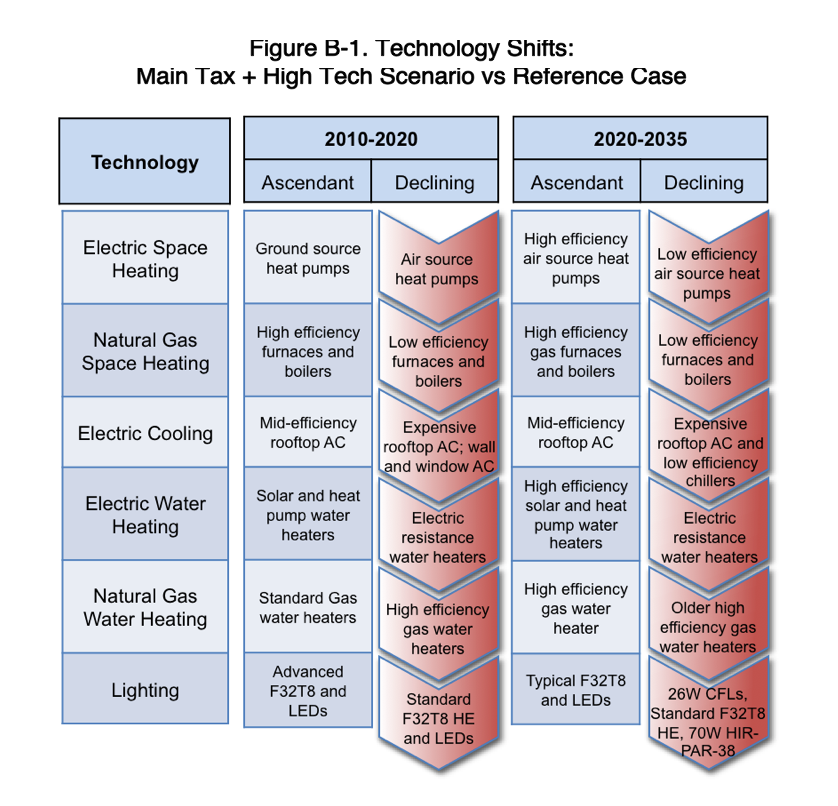One of the simplest actions countries can take to provide an equity-enhancing, economically efficient response to climate change is to provide a price for GHG emissions that incentivizes energy efficiency. Unlike many policies that are specific to individual technologies or sectors, carbon taxes tend to be economy-wide. The focus of this analysis is on the impact of an economy-wide carbon tax on the energy consumption and carbon emissions of US commercial buildings.
Using a specialized version of the National Energy Modeling System (NEMS-2011), we are exploring several key questions about carbon pricing:
- how much do different trajectories of carbon pricing reduce CO2 emissions from the U.S. commercial building sector, and what proportion of these reductions are due to changes in carbon intensity, energy intensity, and GDP effects?
- which types of commercial buildings, end-uses and technologies are most responsive to a carbon tax?
- how do carbon prices affect markets when implemented in conjunction with strong complementary policies such as commercial building codes, equipment standards, and financial incentives?
- what are the geographical effects of carbon prices on commercial building energy efficiencies, using the nine U.S. Census divisions.

Preliminary analysis suggests that the commercial building sector would be responsive to a carbon tax. Its energy intensity with the carbon tax scenario ($25/ton CO2 tax, starting in 2015 with a 5% annual increase) would decline by 6.3% by 2020, while the energy intensity of the U.S. economy as a whole would decline by only 3.3%. (Commercial energy intensity is measured in Btu/ft2.)
These results were presented at the 2012 ACEEE Summer Study on energy efficiency in buildings, and were also published in the conference proceedings.
Resources:
- Brown, Marilyn A., Matt Cox, and Xiaojing Sun. 2012. “Modeling the Impact of a Carbon Tax on the Commercial Buildings Sector,” Proceedings of the American Council for an Energy Efficient Economy (ACEEE) Summer Study on Energy Efficiency in Buildings, Pacific Grove, CA, pp. 8-27 - 8-39. http://aceee.org/files/proceedings/2012/data/papers/0193-000262.pdf
- Brown, Marilyn A., Matt Cox, and Xiaojing Sun. 2012. “Modeling the Impact of a Carbon Tax on the Commercial Buildings Sector,” Georgia Institute of Technology, School of Public Policy Working Paper (https://spp.gatech.edu/publications/pub/1442).
- 2012 Southern Sectino AWMA Scholarship Award Talk by Yeong Jae Kim
Researchers:
- Dr. Marilyn A. Brown: marilyn.brown@pubpolicy.gatech.edu
- Matt Cox: Matt.Cox@gatech.edu
- Xiaojing Sun: xsun44@gatech.edu
